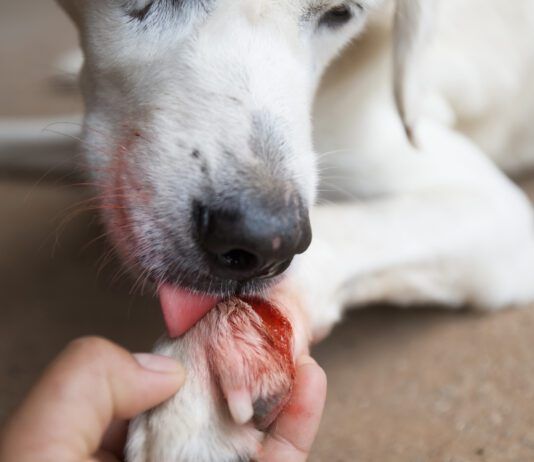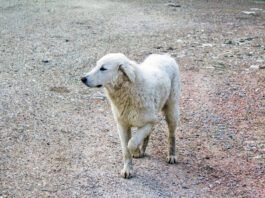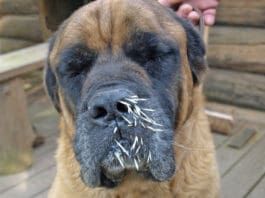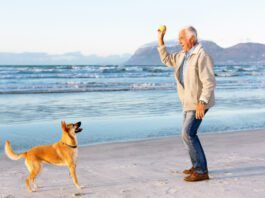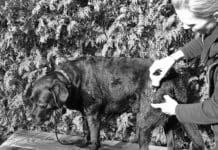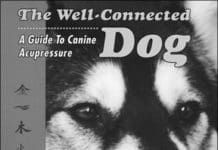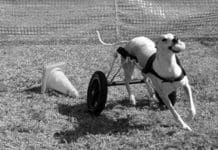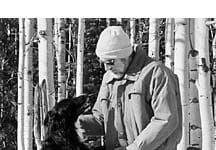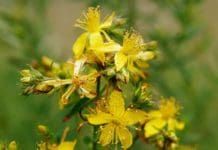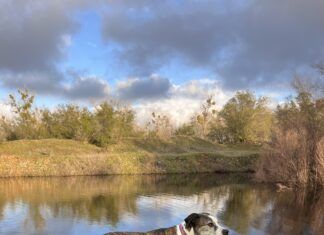Home Treatments for Injured Dogs
A muscle strain here, a pulled ligament there, a sprain, a bruise pretty soon we're talking about serious problems. Canine sports injuries are increasingly common, but there is much you can do to catch them early, treat them correctly, and reduce the risk of your dog getting badly hurt, needing surgery, or having to retire from competition.
Athletic Dogs and Acupressure Techniques
When spring is in the air, every dog knows it. Spring is the season when dogs want to run, play, and stretch their bodies, when their eyes brighten, and their natural zest for life flows through their veins. Spring is a time of action. There are so many canine performance sports today that require peak levels of running, twisting, turning, jumping, and pivoting. Anyone watching a canine agility trial or flyball competition can see the adrenaline pumping through every ounce of the dog's being. Adrenaline can override the senses and the animal can unknowingly hurt himself badly, especially early in the season. The risk of injury is very high when a dog is not properly conditioned. Also, dogs need to be given the opportunity to warm up before engaging in the burst of excitement and energy they experience at the moment they are released for coursing, a herding test, or on a sledding trail.
Activity-Related Canine Injuries
He’s fearless. Reckless. Senseless? Or perhaps my Australian Cattle Dog, Cedar, is just accident-prone. Yesterday he slammed head first into a door jam during rough play with my Shepherd-mix, Willow. Today he did a nose dive off a five-foot embankment in pursuit of his favorite all-natural dog toy: a pine cone. As always, he retrieved the cone, chewed it into a slobbery clump of fibrous goo, and dropped it at my feet. On his trot back I noticed he was limping, holding his front leg off the ground.
Limber Tail Syndrome
The syndrome seems to be caused by muscle injury possibly brought on by overexertion, says Janet Steiss, DVM, PhD, PT. Steiss is an associate professor at Auburn University's College of Veterinary Medicine and coauthor of the 1999 study on limber tail that pinpointed the nature of the muscle damage.
A Paralyzed Dog is Still Flying High
and took four-month-old Gideon home in August 2002.
Seeking an outlet for Gideon's energy
Symptoms That Your Dog May Be Injured
A reluctance to perform may indicate that your dog is injured or ill. The sooner you investigate, the more successful any needed treatment will be. Acute or chronic health problems - from spinal misalignments or torn muscles to the development of disease - are commonly to blame for the onset of performance failures in well-trained and well-conditioned dogs.
Regaining What Was Almost Lost
first discovered Petey at their local humane society shelter in 1990. Scheduled for euthanasia the next day
Recovery From a ‘Fetch’ Injury
You’ve played this game thousands of times. You’ve got a few minutes, and your maniacally loyal canine companion is eager to play fetch, begging for it, ball in mouth, dropping it at your feet, barking in joyful anticipation. Then it happened. Willie slipped, tried to stop, and twisted into a ball with a yelp. He lay paralyzed from the middle of the back down, lying quietly on the frozen ground as Rogers rushed over.
Treating Your Dogs’ Injuries Holistically
No matter how careful you are with your dog's everyday health needs, it's in his nature to be incautious and inquisitive. And that sometimes results in injury. Odds are, it's just a matter of when. However, your conviction to treat your dog with natural remedies is put to a real test when you are faced with an emergency. Whether your dog is severely injured in an accident or scraped and cut from a fight, your first reaction should be to remain calm, remember what you know, and think holistically. Just as you plan and prepare your dog's daily meals and training, advance planning and preparation for the unthinkable accident may help save your dog's life during the critical time between the beginning of the emergency and access to veterinary care.
Dog Injury Solutions: Calendula and St. John’s Wort
Calendula Officinalis (also known as the Marigold plant, but usually called calendula) and hypericum (also known as Saint John's Wort), are very safe, yet incredibly effective at cleaning the site of an injury and encouraging the body to heal. Homeopathic and herbal preparations of calendula and hypericum have proved invaluable in modern-day holistic dog care. In fact, it's difficult to find an herbal wound preparation that does not contain some form of one or both of these potent plants.
Stretching Your Dog Reduces the Chance of Muscle Tears
All dogs instinctively know how to stretch and do so with great enjoyment. Dogs stretch without fail upon awakening and whenever the mood strikes during the rest of the day. Who hasn’t watched a dog inch his front paws out in front of him as far as possible leaning into the stretch until it literally ripples along the length of his trunk? When the stretch finally reaches the hips, the hind legs are extended far behind the body in what appears to be total ecstasy. The dog completes the routine by dropping to his elbows and stretching the back in a doggy bow that temporarily elevates the rump. Then, the hindquarters flop to the floor in a grand finale to the stretch.
Enzyme Therapy for Quicker Canine Injury Recovery
Enzymes are protein-like compounds that, in small amounts, speed the rate of biological reactions. Unstable, fragile, and easily inactivated, enzymes are produced within living cells to perform specific biochemical reactions. Enzymes exist in plants as well as animals. Without them, life as we know it would not exist. Enzymes cause seeds to sprout, flowers to blossom, plants to grow, autumn leaves to change color, and fruits to ripen.


